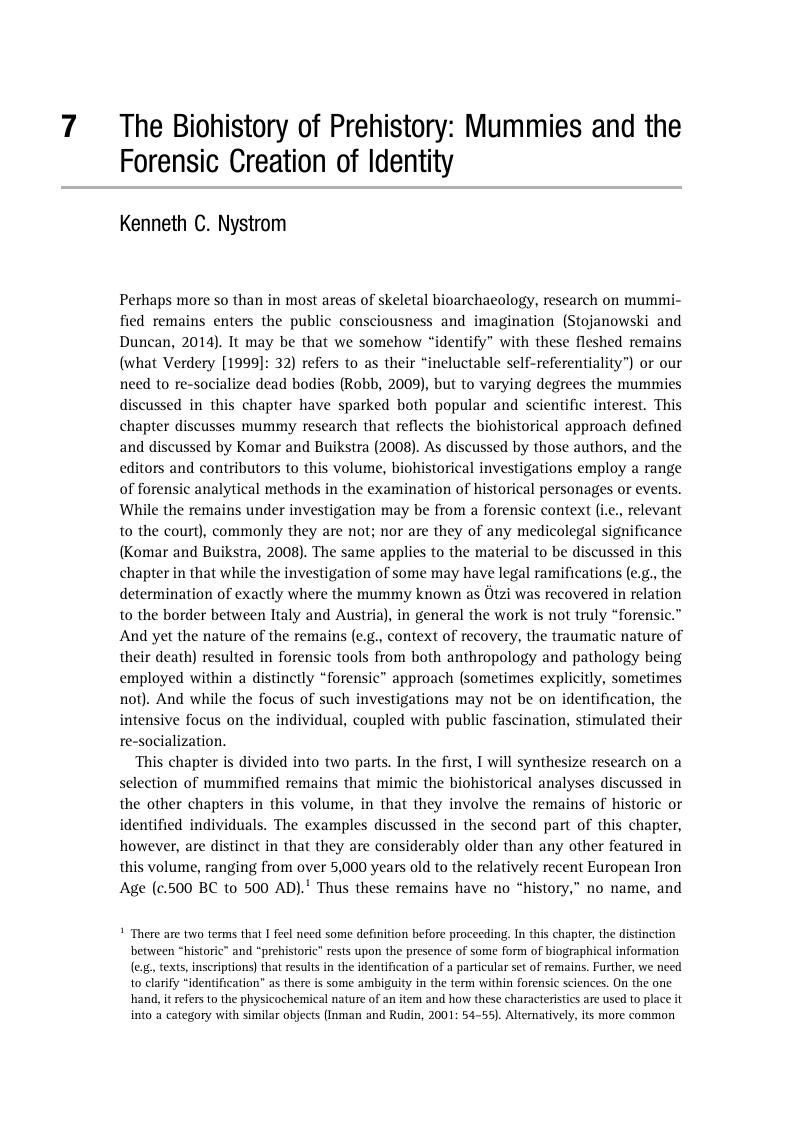Book contents
- Studies in Forensic BiohistoryAnthropological Perspectives
- Cambridge Studies in Biological and Evolutionary Anthropology
- Studies in Forensic Biohistory
- Copyright page
- Contents
- Contributors
- Acknowledgments
- 1 Defining an Anthropological Biohistorical Research Agenda: The History, Scale, and Scope of an Emerging Discipline
- 2 Autopsy of Past Leaders: What Do Remains Tell Us About Them?
- 3 Game of Thrones: Richard III and the Creation of Cultural Heritage
- 4 The Search for Don Francisco de Paula Marin: Servant, Friend, and Advisor to King Kamehameha I, Kingdom of Hawai‘i
- 5 Unearthing Robert Kennicott: Naturalist, Explorer, Smithsonian Scientist
- 6 The Influence of the Law on the Postmortem Narratives of Unknown Human Remains
- 7 The Biohistory of Prehistory: Mummies and the Forensic Creation of Identity
- 8 Talking Heads and Other Specters of the Mountain Meadows Massacre
- 9 Facial Reconstruction of Famous Historical Figures: Between Science and Art
- 10 The Probabilistic Basis for Identifying Individuals in Biohistorical Research
- 11 Known Unknowns: Forensic Science, the Nation-State, and the Iconic Dead
- 12 The Biohistory of Atrocity and the Social Life of Human Remains
- 13 Ethical Issues in Biohistory: No Easy Answers!
- 14 Theoretical Facets of Biohistorical Research
- Index
- References
7 - The Biohistory of Prehistory: Mummies and the Forensic Creation of Identity
Published online by Cambridge University Press: 26 January 2017
- Studies in Forensic BiohistoryAnthropological Perspectives
- Cambridge Studies in Biological and Evolutionary Anthropology
- Studies in Forensic Biohistory
- Copyright page
- Contents
- Contributors
- Acknowledgments
- 1 Defining an Anthropological Biohistorical Research Agenda: The History, Scale, and Scope of an Emerging Discipline
- 2 Autopsy of Past Leaders: What Do Remains Tell Us About Them?
- 3 Game of Thrones: Richard III and the Creation of Cultural Heritage
- 4 The Search for Don Francisco de Paula Marin: Servant, Friend, and Advisor to King Kamehameha I, Kingdom of Hawai‘i
- 5 Unearthing Robert Kennicott: Naturalist, Explorer, Smithsonian Scientist
- 6 The Influence of the Law on the Postmortem Narratives of Unknown Human Remains
- 7 The Biohistory of Prehistory: Mummies and the Forensic Creation of Identity
- 8 Talking Heads and Other Specters of the Mountain Meadows Massacre
- 9 Facial Reconstruction of Famous Historical Figures: Between Science and Art
- 10 The Probabilistic Basis for Identifying Individuals in Biohistorical Research
- 11 Known Unknowns: Forensic Science, the Nation-State, and the Iconic Dead
- 12 The Biohistory of Atrocity and the Social Life of Human Remains
- 13 Ethical Issues in Biohistory: No Easy Answers!
- 14 Theoretical Facets of Biohistorical Research
- Index
- References
Summary

- Type
- Chapter
- Information
- Studies in Forensic BiohistoryAnthropological Perspectives, pp. 143 - 166Publisher: Cambridge University PressPrint publication year: 2017



